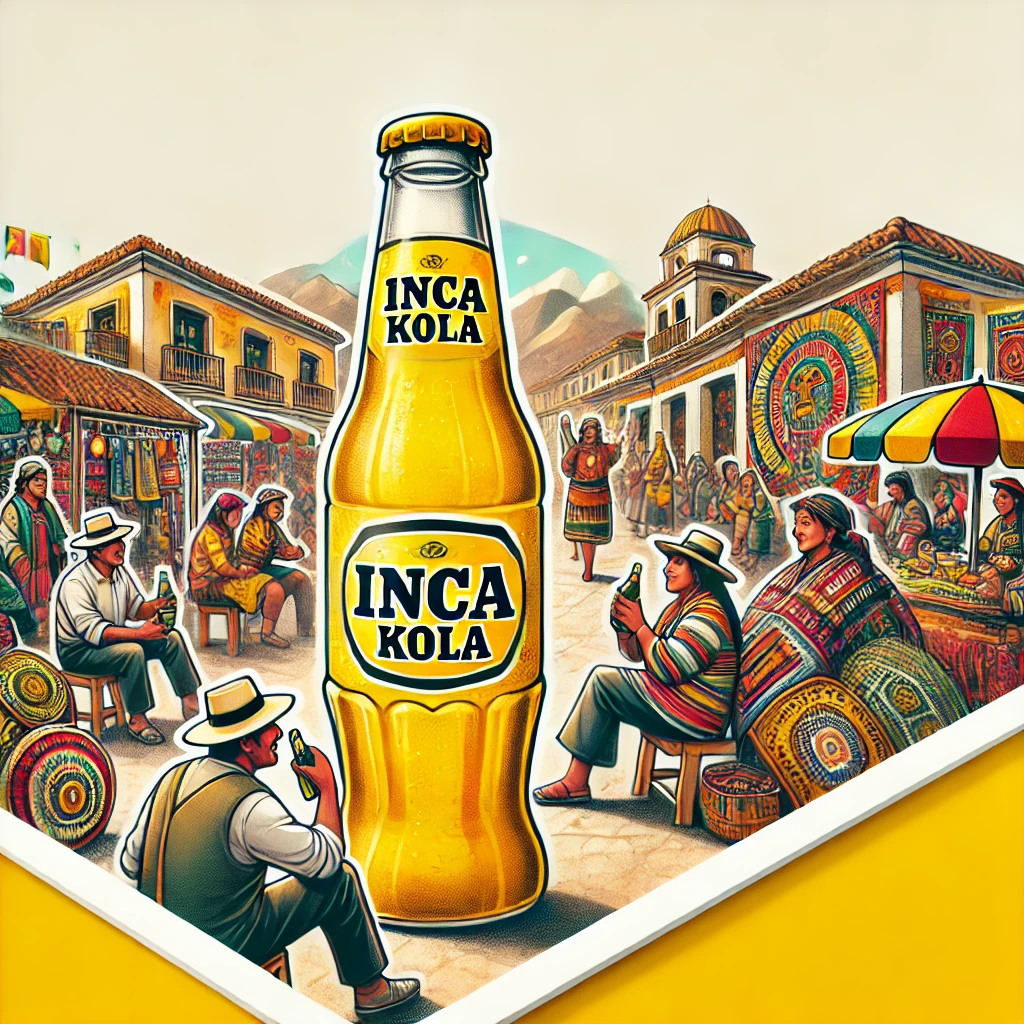Explore the cultural significance, unique flavor profiles, and effective regional marketing strategies that highlight the rich diversity of culinary traditions.Inca Kola, often referred to as “the golden soda,” has captured the hearts and taste buds of South Americans since its creation in 1935. Rooted deeply in Peruvian culture, this soft drink transcends mere refreshment to become a symbol of national pride and identity. Its striking yellow hue and unique flavor—a delightful mix of bubblegum and citrus—set it apart from its more global competitors, creating an undeniable allure that keeps consumers coming back for more. Additionally, regional marketing strategies that resonate with local traditions and preferences have further cemented Inca Kola’s status as a beloved beverage across the continent. Join us as we explore the cultural significance, unique flavor profile, and effective marketing techniques that contribute to the enduring popularity of Inca Kola in South America.
Cultural Significance
Inca Kola, often referred to as the Golden Kola, holds a special place in the hearts of many South Americans, particularly in Peru. Since its creation in 1935, this soft drink has transcended mere refreshment to become a symbol of national pride. It represents not just a beverage, but a cherished aspect of cultural identity that resonates with local traditions and heritage.
The drink’s vibrant yellow color is often associated with the rich Incan heritage and the bountiful landscapes of South America. Many Peruvians regard it as a staple at family gatherings, celebrations, and meals. Its unique flavor, which is often described as a mix of citrus and bubblegum, provides a nostalgic taste that connects generations.
Moreover, Inca Kola’s popularity extends beyond its taste; it reflects the fusion of cultures within Peru. Over the decades, it has become a means of social connection, frequently served at local festivals and social events. In this way, it fosters a sense of community and belonging among those who savor its distinctive flavor.
Unique Flavor Profile
One of the most striking features of Inca Kola is its unique flavor profile, which sets it apart from other soft drinks. This Peruvian beverage, often referred to as the golden Kola, has a bright yellow hue that immediately catches the eye. Its taste is a delightful blend of sweetness, with notes reminiscent of bubblegum and cream soda, giving it a nostalgic essence tantalizing to the palate.
The secret behind Inca Kola’s captivating flavor lies in its formulation, which includes a blend of herbs, and a mix of delicious tropical fruit extracts. Many locals describe the flavor as a perfect combination of citrus and vanilla, elevating it from a simple soda to a rich and multi-dimensional experience. This layering of tastes resonates well with Peruvians and visitors alike, making it a preferred choice for various occasions.
Inca Kola is not just a drink; it represents cultural identity and nostalgia for many Peruvians. As a staple at family gatherings, celebrations, and even casual dining, its unique flavor adds a special touch, making it an essential part of the Peruvian culinary landscape. Whether enjoyed with traditional dishes like ceviche or as a refreshing refreshment on a hot day, Inca Kola’s unique flavor profile continues to be int
Regional Marketing Strategies
Inca Kola’s success in South America can be attributed to its regional marketing strategies that resonate deeply with local consumers. The brand has effectively tapped into the cultural nuances and preferences of various countries, particularly in Peru, where it was originally created. This approach has helped Inca Kola solidify its position as a beloved national beverage.
One of the most notable strategies has been the use of localized advertising campaigns. By incorporating elements of Peruvian culture, music, and traditions into their marketing materials, Inca Kola has established an emotional connection with consumers. For example, ads that feature local festivals or traditional Peruvian dishes highlight the drink’s status as a staple in the daily lives of many. This strategy not only boosts brand recognition but also fosters a sense of pride among consumers.
Moreover, Inca Kola has leveraged partnerships with local restaurants and food vendors to further promote its brand. By being featured alongside popular Peruvian dishes, such as ceviche and lomo saltado, Inca Kola enhances its presence in the culinary scene. This method not only increases sales but also reinforces the perception of the drink as an integral part of the local gastronomy.
Frequently Asked Questions
Inca Kola is a popular soft drink from Peru, known for its bright yellow color and unique bubblegum-like flavor.Inca Kola was first introduced in 1935 by Joseph Robinson, a British immigrant to Peru.Inca Kola is a cultural icon in Peru as it embodies national pride and is often associated with celebrations, family gatherings, and traditional Peruvian cuisine.Inca Kola often outsells Coca-Cola in Peru, representing local preferences and tastes, and is viewed as a symbol of Peruvian identity.Inca Kola is commonly consumed with meals, particularly with traditional dishes like ceviche and pollo a la brasa, enhancing the overall dining experience.Inca Kola has maintained its popularity through effective marketing strategies, local endorsements, and staying true to its Peruvian roots while also expanding its distribution.Yes, while the original flavor is most popular, Inca Kola has introduced variations such as sugar-free versions and different flavor combinations to cater to diverse tastes.


